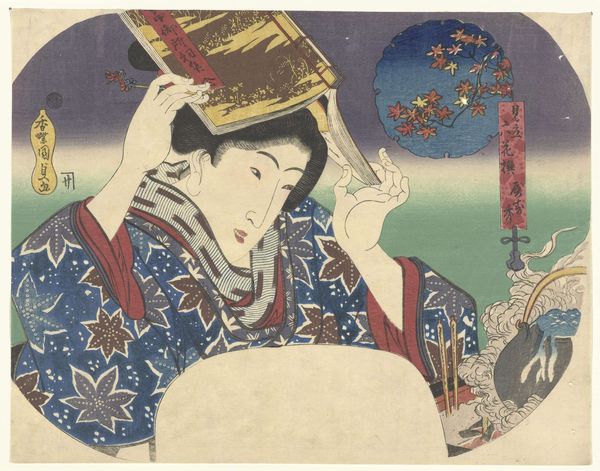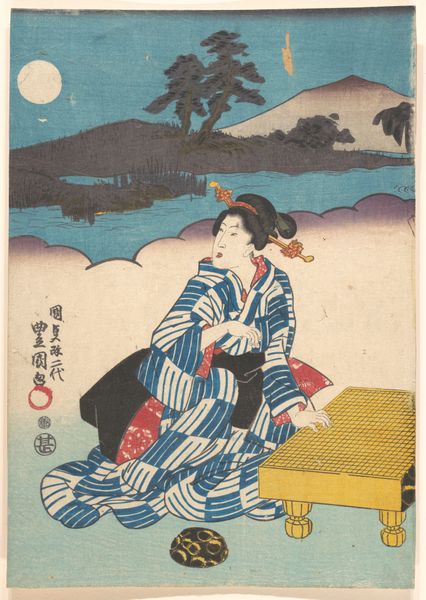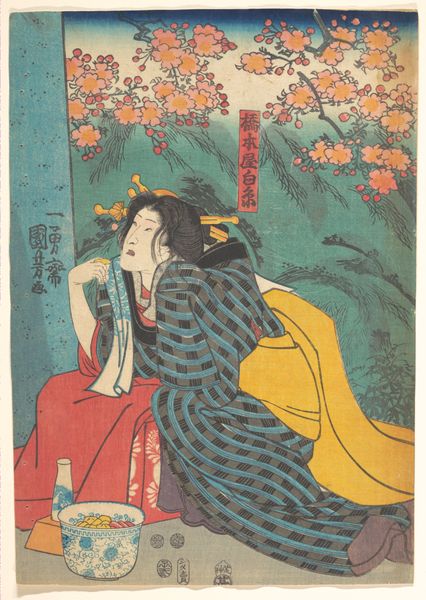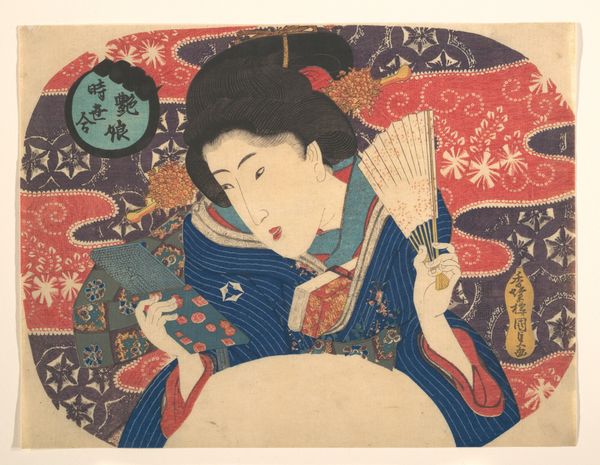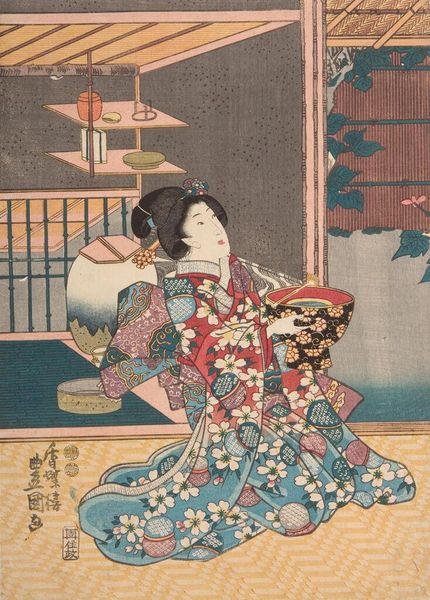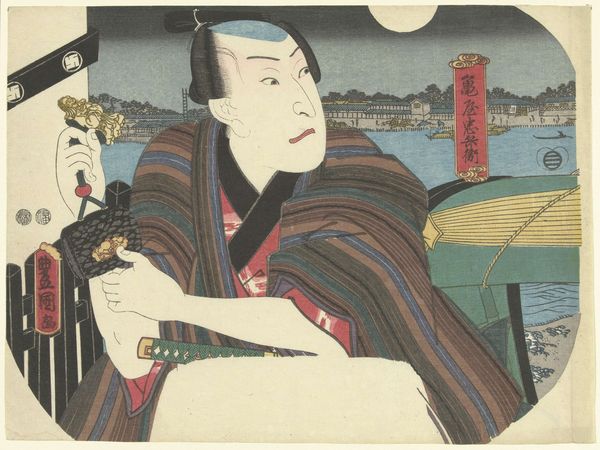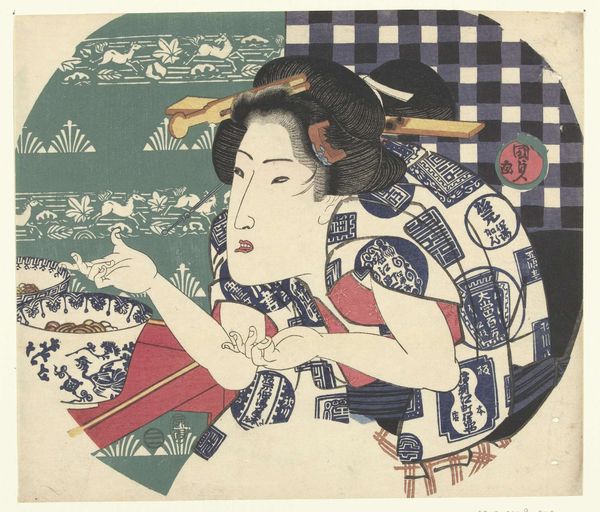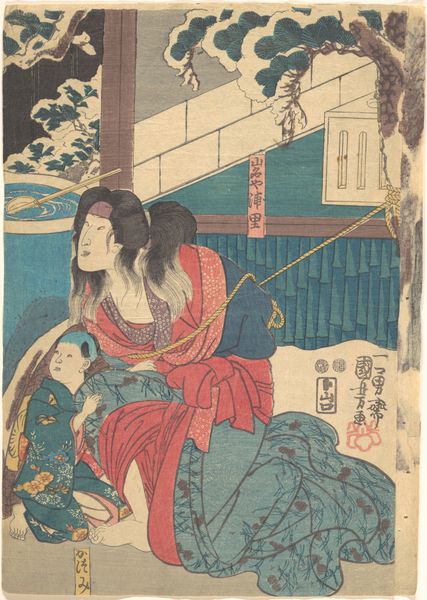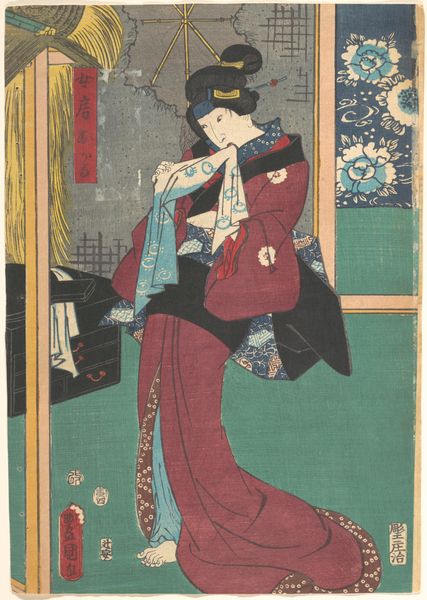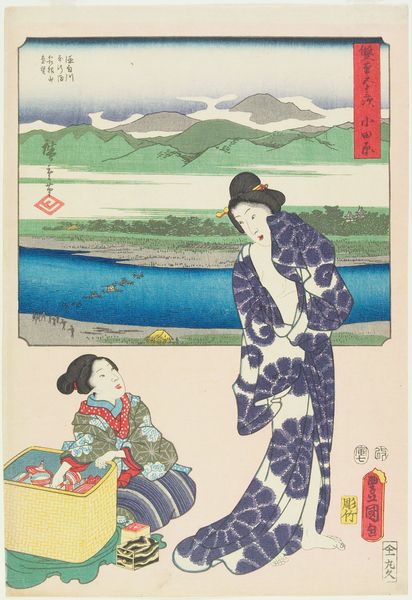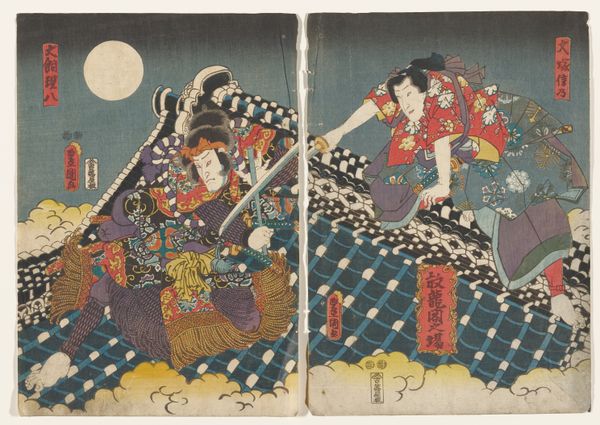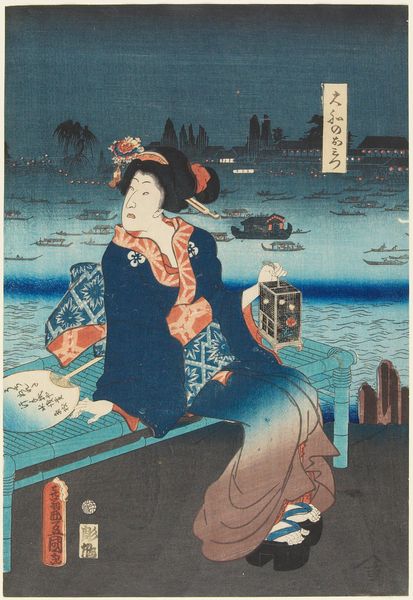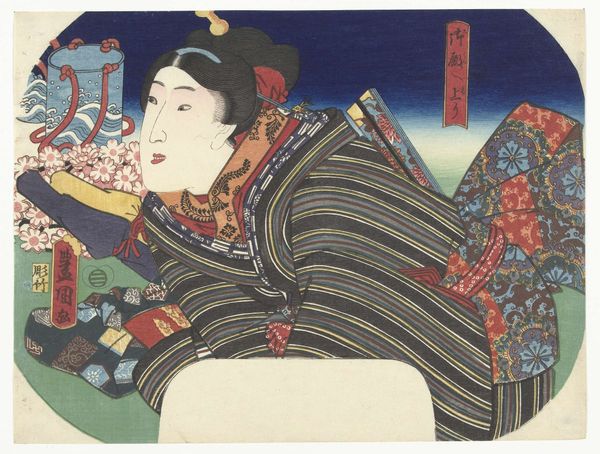
Murasaki Gazing at the Moon at Ishiyama Temple c. 1847 - 1848
0:00
0:00
Dimensions: 6 13/16 × 8 11/16 in. (17.3 × 22 cm) (image, sheet, small uchiwa-e)
Copyright: Public Domain
Editor: Here we have "Murasaki Gazing at the Moon at Ishiyama Temple," a woodblock print in ink, crafted around 1847-1848 by Utagawa Hiroshige. It’s really striking – the composition with Murasaki in the foreground against that luminous moon is quite beautiful. How do you interpret this work within its historical context? Curator: It's fascinating to consider this ukiyo-e print not just as an aesthetic object, but also a reflection of its time. Think about the role of prints like these in 19th-century Japan. They were relatively affordable, widely circulated images. Hiroshige here isn't just depicting a scene; he’s engaging with the cultural fascination surrounding Murasaki Shikibu, the author of *The Tale of Genji*, a classic of Japanese literature. Editor: So, this print helped popularize the story and its characters? Curator: Exactly. The print allowed a wider audience to access and imagine Murasaki in her creative moment. Ishiyama Temple was believed to be where she conceived of the *Tale of Genji*, further adding to the romantic and intellectual allure. Notice also how the moon and landscape play into that feeling of solitary reflection. Editor: It almost feels like he is turning the author into a celebrity! Is that a fair reading? Curator: It absolutely can be read that way! Printmakers and publishers certainly tapped into the popularity of figures and narratives. Consider, though, that it wasn't simply about 'celebrity' in our modern sense, but also about promoting a shared cultural heritage, reinforcing social values, and, ultimately, generating revenue. So, where do you see this blend of art and social function in the print's reception? Editor: I see it! Thinking about the print's affordability and reach changes how I understand it. It's not just art, it's cultural commentary. Thank you! Curator: And in considering its cultural role, we recognize how images shape our collective memory and even dictate what is deemed worthy of remembering. It's a fascinating process.
Comments
minneapolisinstituteofart over 1 year ago
⋮
For this fan print, Utagawa Hiroshige depicted the noblewoman Murasaki Shikibu, author of The Tale of Genji. It is said that Murasaki began writing her novel while viewing the harvest moon over Lake Biwa during a stay at the Buddhist temple Ishiyamadera. For this print, Hiroshige imagines Murasaki gazing at the moon and lost in thought, perhaps conceiving of her would-be novel and about to begin writing. Seated at a low writing desk, she holds a writing brush in her right hand and rests her left elbow on a blank sheet of paper. Visible at lower left is the edge of an inkstone.
Join the conversation
Join millions of artists and users on Artera today and experience the ultimate creative platform.
